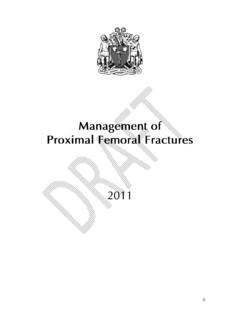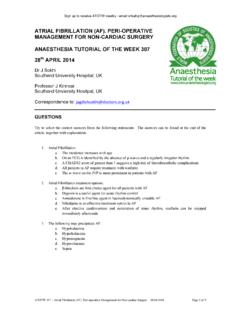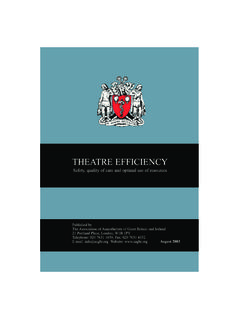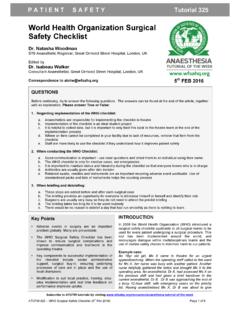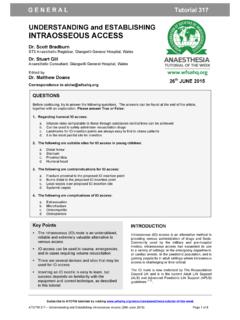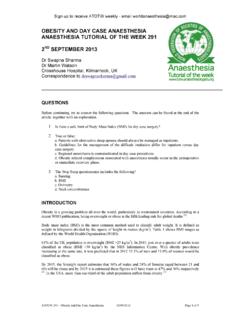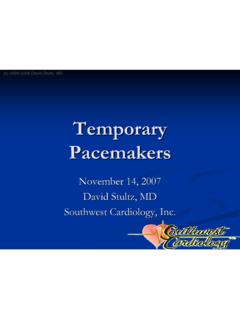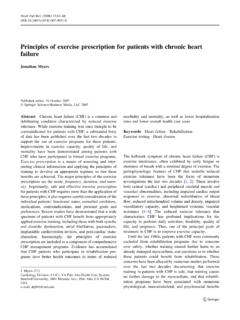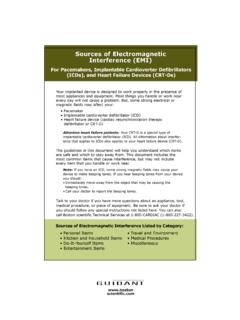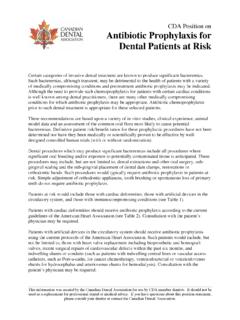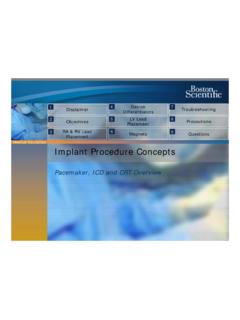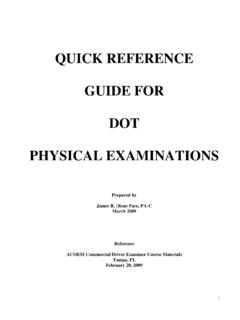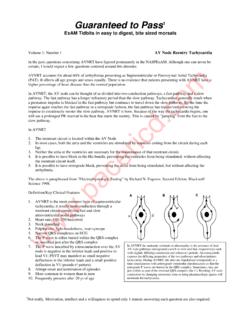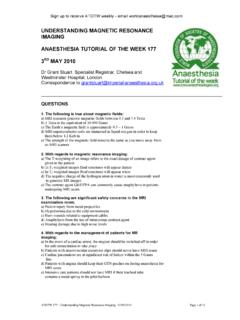Transcription of PACEMAKERS & IMPLANTABLE CARDIOVERTER …
1 Sign up to receive ATOTW weekly - email ATOTW 300 PACEMAKERS & IMPLANTABLE CARDIOVERTER -Defibrillators (ICDs) - Part 2 - Anaesthesia, 02/12/2013 Page 1 of 10 This work is licensed under the Creative Commons Attribution-NonCommercial Unported License. To view a copy of this license, visit PACEMAKERS & IMPLANTABLE CARDIOVERTER -DEFIBRILLATORS (ICDs) - PART 2 - ANAESTHESIA ANAESTHESIA TUTORIAL OF THE WEEK 300 2nd DECEMBER 2013 Dr. Md. Rajib Pervez, Trainee in Anaesthesiology, Bangladesh Medical College Hospital (BMCH), Bangladesh.
2 Correspondence to QUESTIONS This is the second of a two-part tutorial which discusses anaesthesia for patients with cardiac PACEMAKERS and IMPLANTABLE CARDIOVERTER -defibrillators (ICD), collectively termed cardiac IMPLANTABLE electronic devices (CIEDs). Below are the questions published in part one. The answers, together with an explanation can be found at the end of this tutorial. 1. Which of the following statements are correct regarding pre-operative pacing? a. If a patient presenting for elective surgery is found pre-operatively to have bifascicular block with 1st degree AV block, the patient should have a transvenous pacemaker before the operation irrespective of cardiovascular symptoms.
3 B. If a patient presenting for emergency surgery has symptomatic third degree heart block, the patient should always have a permanent pacemaker inserted before the surgery can safely proceed. c. Asymptomatic Type II second degree AV block is NOT an indication for pre-operative pacemaker insertion before elective surgery. d. Asymptomatic First degree AV block is extremely unlikely to progress to second degree block in the perioperative period. As a result they do not require pre-operative pacing.
4 2. List 5 potential adverse events that may arise if a patient with an implanted pacemaker is exposed to a MRI? 3. Which of the following statements are true regarding the perioperative management of PACEMAKERS and ICDs? a. A Magnet placed over a pacemaker device is a recommended alternative to formal device re-programming before an operation involving diathermy. b. If a pulseless shockable rhythm occurs intra-operatively in a patient with a program-inactivated IMPLANTABLE CARDIOVERTER defibrillator (ICD), the first step would be to page the cardiology technician to re-enable the ICD.
5 C. If a pulseless shockable rhythm occurs intra-operatively in a patient with an implanted pacemaker , the patient should be immediately externally defibrillated using standard energy levels. d. On an X-ray film, one can most reliably distinguish between an ICD and a permanent IMPLANTABLE pacemaker (PPM) by looking at the generator box. Sign up to receive ATOTW weekly - email ATOTW 300 PACEMAKERS & IMPLANTABLE CARDIOVERTER -Defibrillators (ICDs) - Part 2 - Anaesthesia, 02/12/2013 Page 2 of 10 This work is licensed under the Creative Commons Attribution-NonCommercial Unported License.
6 To view a copy of this license, visit ANAESTHESIA FOR PATIENTS WITH IMPLANTABLE CARDIAC DEVICES The presence of an artificial cardiac pacemaker or ICD in a patient scheduled for surgery unrelated to the device introduces special considerations for preoperative evaluation and subsequent management of anaesthesia. PREOPERATIVE EVALUATION In addition to the routine systematic workup (paying particular attention to cardiovascular status), the anaesthetist needs to establish the presence and location of the CIED and the reason for its insertion.
7 This is achieved by taking a focused history including review of the medical records. Physical examination should include a search for scars over the chest and upper abdomen and a chest X-ray confirms the presence and location of device. The anaesthetist then needs to answer the following questions: 1. What is the type of the device and program mode? 2. Is the device functioning properly? 3. How dependent is the patient on the device (as an anti-bradycardia function)? 4. What is the probability of electromagnetic interference in theatre and how do we minimise the risk?
8 1. Defining the type of device This might be accomplished by: Obtaining the manufacturer s identification card from the patient or other source Ordering chest x-ray studies if no other data are available. The presence of shocking coil(s) in the right ventricle and sometimes also in the superior vena cava indicates an implanted ICD. (Healey JS et al. 2012) Referring to supplemental resources like vendor s database, pacemaker clinic records, consultation with cardiologist 2. Determining if the device is functioning properly PACEMAKERS can fail early or late after insertion.
9 Early failure is often due to displaced or broken electrodes whereas late failure is often attributed to premature battery failure. The pacemaker function should be checked where possible by the pacemaker technologists who can interrogate the device before proceeding to surgery. If interrogating the device is not an option, one can slow the intrinsic heart rate to a rate below that of the pacemaker by carotid massage or a Valsalva; a functioning pacemaker will then takeover the heart rate.
10 If the rate does not slow down enough for the pacemaker to take over the ventricle, common practice used to be to test the device by placing a magnet over it to convert it to a fixed-rate pacing mode. In this mode, pacing spikes march through the rhythm strip with no regard for the intrinsic electrical activity of the heart. However, magnets are not recommended, as the pacemaker response to a magnet is unpredictable and maybe hazardous to the patient (see below). Sign up to receive ATOTW weekly - email ATOTW 300 PACEMAKERS & IMPLANTABLE CARDIOVERTER -Defibrillators (ICDs) - Part 2 - Anaesthesia, 02/12/2013 Page 3 of 10 This work is licensed under the Creative Commons Attribution-NonCommercial Unported License.
